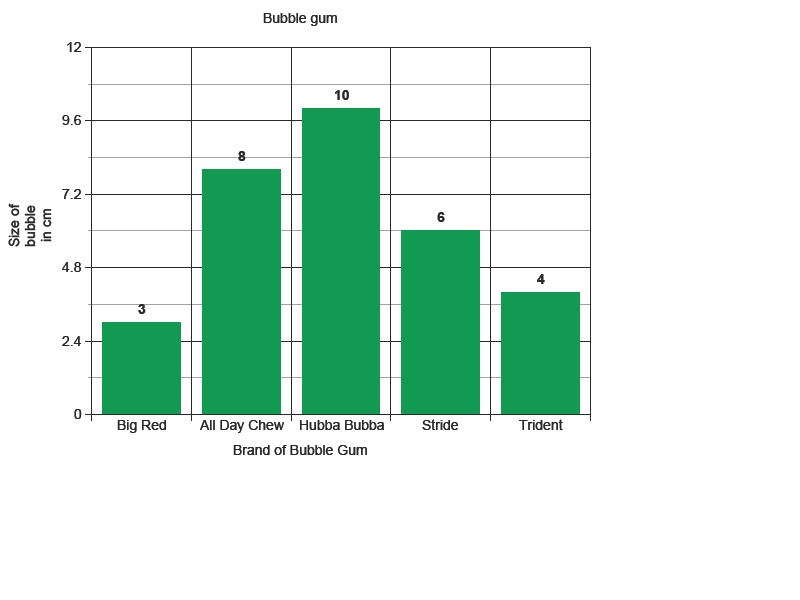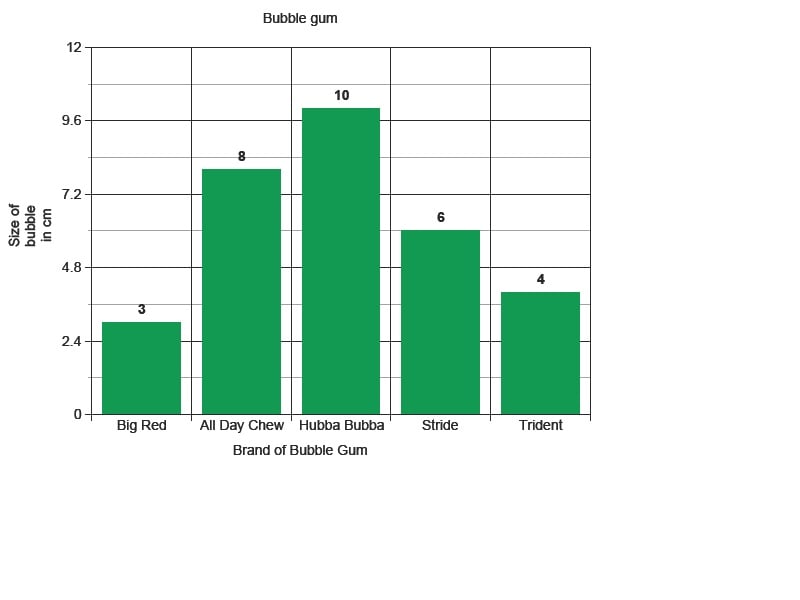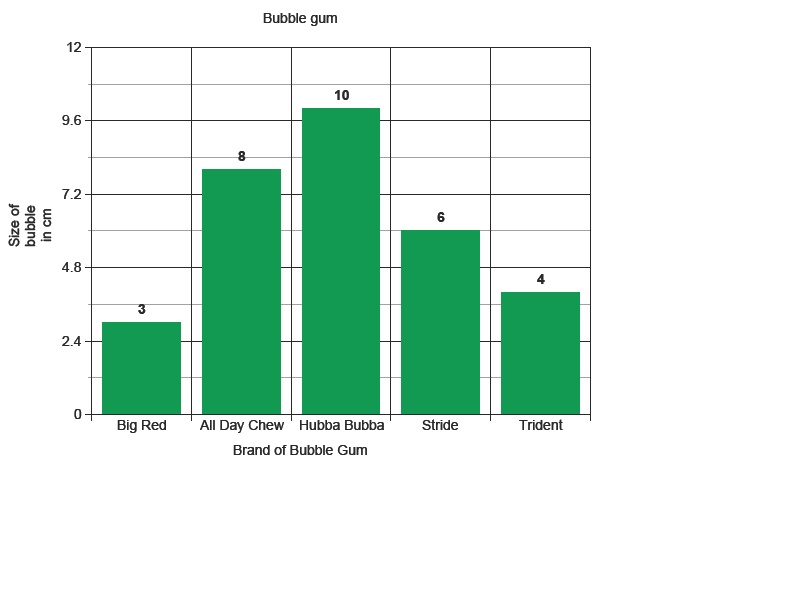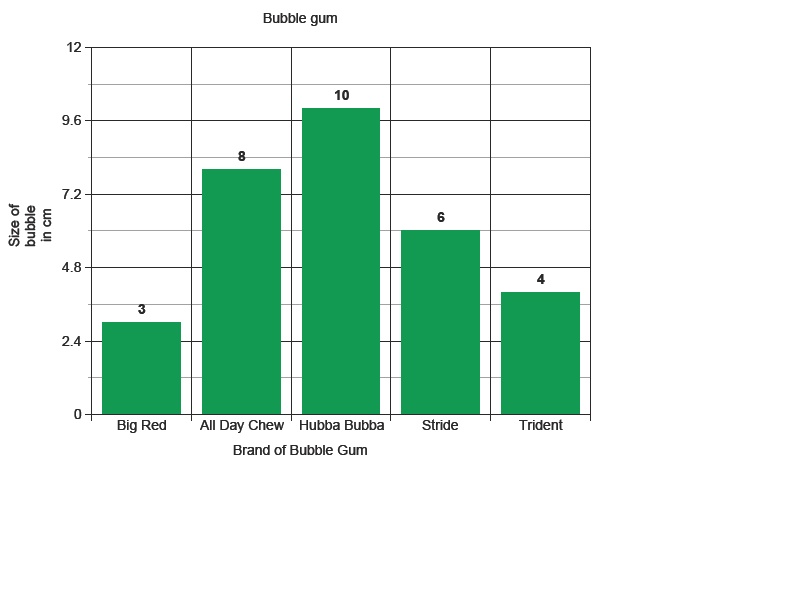A Scientific Method Quiz- II

Scientific Method Review
- 1.
A scientist plants two rows of corn for experimentation. She puts fertilizer on row 1 but does not put fertilizer on row 2. Both rows receive the same amount of water and light intensity. She checks the growth of the corn over the course of 5 months. What is one controlled variable in this experiment?
- A.
Amount of fertlizer given to experimental group
- B.
Growth of corn
- C.
Type of fertilizer
Correct Answer
A. Amount of fertlizer given to experimental groupExplanation
One controlled variable in this experiment is the amount of fertilizer given to the experimental group. The scientist is testing the effect of fertilizer on the growth of corn, so she needs to ensure that the only difference between the two rows is the presence or absence of fertilizer. By controlling the amount of fertilizer given to the experimental group, she can compare the growth of corn in both rows and determine the impact of fertilizer on plant growth.Rate this question:
-
- 2.
Which sentence best describes the importance of using a control group?
- A.
When you use a control group you don't need a large sample size.
- B.
When you have a control group you don't have to do any calculations.
- C.
Control groups allow you to compare those recieving the variable and those that are not.
Correct Answer
C. Control groups allow you to compare those recieving the variable and those that are not.Explanation
Control groups are important because they allow for a comparison between the group that receives the variable being tested and the group that does not receive it. This comparison helps to determine the true effect of the variable being tested, as any observed differences between the two groups can be attributed to the variable itself rather than other factors. By having a control group, researchers can establish a baseline and make valid conclusions about the impact of the variable being studied.Rate this question:
-
- 3.
The measurable factor in an experiment is known as the
- A.
Independent variable.
- B.
Dependent variable
- C.
Controlled variable
Correct Answer
B. Dependent variableExplanation
The dependent variable in an experiment is the factor that is being measured or observed. It is the variable that is expected to change in response to the manipulation of the independent variable. In other words, the dependent variable is the outcome or result of the experiment and is dependent on the independent variable. The controlled variable, on the other hand, is a factor that is kept constant throughout the experiment to ensure that it does not influence the results. Therefore, the correct answer is dependent variable.Rate this question:
-
- 4.
John is following the steps of his procedure and writing data in his data table. What step of the scientific method is he in right now?
- A.
Step 1
- B.
Step 2
- C.
Step 3
- D.
Step 4
- E.
Step 5
Correct Answer
C. Step 3Explanation
John is currently in Step 3 of the scientific method, which is the step of gathering and recording data. This step involves carefully observing and collecting data related to the experiment or research being conducted. John is following the procedure and writing data in his data table, which aligns with the actions required in Step 3.Rate this question:
-
- 5.
John is doing research to come up with an educated guess to explain his problem. What step is he currently working in?
- A.
Step 1
- B.
Step 2
- C.
Step 3
- D.
Step 4
- E.
Step 5
Correct Answer
B. Step 2Explanation
John is currently working in Step 2. In the research process, Step 1 involves identifying the problem, while Step 2 involves gathering information and data to come up with an educated guess or hypothesis to explain the problem.Rate this question:
-
- 6.
The ________ is a list of steps to follow during an experiment.
Correct Answer
procedureExplanation
A procedure is a set of instructions or steps that need to be followed during an experiment. It provides a systematic approach to conducting the experiment and ensures that the results are reliable and consistent. By following the procedure, researchers can replicate the experiment and verify the findings. It helps to maintain consistency and standardization in scientific experiments, allowing other scientists to reproduce the experiment and validate the results.Rate this question:
- 7.
A _______ is something you create to show data after it has been analyzed. It contains a title, axis labels, and is usually colored.
Correct Answer
graphExplanation
A graph is a visual representation of analyzed data that includes a title, axis labels, and is typically colored. It is created to present the information in a clear and organized manner, allowing viewers to easily understand and interpret the data. Graphs can be used in various fields such as science, mathematics, economics, and business to illustrate trends, patterns, and relationships between variables.Rate this question:
- 8.
The question that you are trying to answer is part of the ____ _____.
Correct Answer
purpose statementExplanation
The given correct answer is "purpose statement". This suggests that the question is asking about a specific part of something, and that part is related to the purpose statement. The purpose statement is a statement that clearly articulates the main objective or goal of a document, research study, project, or any other endeavor. It helps to provide direction and clarity to the overall purpose and intent of the work.Rate this question:
- 9.
Your ____ must state whether your hypothesis was supported by the data or not.
Correct Answer
conclusionExplanation
The word "conclusion" is the correct answer because it refers to the statement that summarizes the findings or results of a study or experiment. In this context, the conclusion is used to indicate whether the hypothesis, which is a proposed explanation for a phenomenon, was supported by the data collected. The conclusion is an important part of the scientific method as it helps to draw final inferences and make decisions based on the evidence gathered.Rate this question:
- 10.
A variable that you keep the same for each trial is a ____ variable.
Correct Answer
controlledExplanation
In an experiment, a controlled variable is a factor that remains constant throughout the trials. It is intentionally kept unchanged to ensure that any observed effects or changes are due to the manipulation of the independent variable and not influenced by other variables. By controlling variables, researchers can isolate and study the specific impact of the independent variable on the dependent variable. Therefore, a variable that is kept the same for each trial is referred to as a controlled variable.Rate this question:
- 11.
Suzy wanted to know if thicker candles burn longer than thinner candles. Her hypothesis was that if she used a thick candle that it would burn for the longest amount of time. She got ten candles that were all the same brand, height, smell, and color. The only difference in the candles was they were all a different size, She lit them at the same time and recorded how long it took for each candle to burn out. What was her independent variable?
- A.
Thickness of the candle
- B.
Length of time the candle burned
- C.
Color of the candle
Correct Answer
A. Thickness of the candleExplanation
The independent variable in this experiment is the thickness of the candle. Suzy wanted to test if thicker candles burn longer than thinner candles, so she manipulated the thickness of the candles to see if it had an effect on the length of time they burned. The other variables, such as the length of time the candle burned and the color of the candle, were not manipulated by Suzy and therefore are not independent variables in this experiment.Rate this question:
-
- 12.
Janet wanted to see if the height of a person affected the length of their handspan. She measured three people's heights, and measured their handspans. She found that the taller a person is, the longer their handspan is. What is wrong with her experiment?
- A.
She tested too many variables at once.
- B.
She did not test a large enough sample of people.
- C.
She did not control all of the variables.
Correct Answer
B. She did not test a large enough sample of people.Explanation
The correct answer is that Janet did not test a large enough sample of people. In order to draw accurate conclusions, it is important to have a sufficient sample size that represents the population being studied. By only measuring three people, Janet's findings may not be representative of the entire population.Rate this question:
-
- 13.
Which of these statements is NOT a good conclusion for the graph shown?
- A.
Big Red blows smaller bubbles than Hubba Bubba.
- B.
All Day Chew blows bubbles almost as large as Hubba Bubba.
- C.
Hubba Bubba is the brand most kids want to chew.
Correct Answer
C. Hubba Bubba is the brand most kids want to chew.Explanation
The graph does not provide any information about which brand most kids want to chew. The graph only compares the size of the bubbles blown by different brands. Therefore, the statement "Hubba Bubba is the brand most kids want to chew" is not a good conclusion based on the information provided in the graph.Rate this question:
-
- 14.
Which hypothesis would have been supported by the data from this graph?
- A.
If Stride is chewed, then most kids will like it.
- B.
If Hubba Bubba is chewed, then the flavor will last the longest.
- C.
If Big red is chewed, then it will have the smallest bubble.
Correct Answer
C. If Big red is chewed, then it will have the smallest bubble.Explanation
The graph shows the size of bubbles produced by different chewing gums. The data supports the hypothesis that if Big Red is chewed, then it will have the smallest bubble. This is evident from the graph where the bubble size for Big Red is consistently smaller compared to the other chewing gums.Rate this question:
-
- 15.
What would be a controlled variable in the experiment from this graph?
- A.
Number of times gum is chewed
- B.
Brand of bubble gum
- C.
Size of bubble
Correct Answer
A. Number of times gum is chewedExplanation
The controlled variable in this experiment would be the number of times gum is chewed. This means that the researchers would keep the number of times gum is chewed constant throughout the experiment. By doing so, they can isolate the effect of other variables, such as the brand of bubble gum or the size of the bubble, on the outcome of the experiment.Rate this question:
-
- 16.
What would be an independent variable from the experiment with this graph?
- A.
Number of times gum is chewed
- B.
Brand of bubble gum
- C.
Size of bubble
Correct Answer
B. Brand of bubble gumExplanation
The independent variable in an experiment is the variable that is manipulated or changed by the researcher. In this case, the brand of bubble gum is the independent variable because it is being varied or changed in the experiment. The number of times gum is chewed and the size of the bubble are dependent variables, meaning they are affected by the independent variable and are measured or observed as a result of the manipulation of the independent variable.Rate this question:
-
- 17.
A ____ group is a group that does not get the variable being tested.
Correct Answer
controlExplanation
A control group is a group that does not receive the variable being tested. This group is used as a baseline to compare the results of the experimental group, which does receive the variable. By having a control group, researchers can determine if any observed effects are due to the variable being tested or if they are simply the result of other factors. The control group helps to establish a cause-and-effect relationship between the variable and the observed outcome.Rate this question:
- 18.
An ____ group is a group that does get the variable that is being tested.
Correct Answer
experimentalExplanation
An experimental group is a group that receives the variable that is being tested. This means that in a scientific experiment, the experimental group is exposed to the independent variable, which is the variable being manipulated or changed by the researcher. By comparing the results of the experimental group with a control group (which does not receive the variable), researchers can determine the effects or impact of the independent variable on the dependent variable. The experimental group allows for the evaluation of cause and effect relationships in a study.Rate this question:
- 19.
Step ___ (use the number) is the step in the scientific method process where you make a graph.
Correct Answer
4Explanation
In the scientific method process, step 4 is where you make a graph. This step involves organizing and representing data visually using a graph, which helps to analyze and interpret the data more effectively. By plotting the data points on a graph, patterns, trends, and relationships between variables can be easily identified and understood. This step is crucial in presenting data in a clear and concise manner, allowing for better communication and comprehension of the results.Rate this question:
- 20.
Step ___ (use the number) is the step in the scientific method where you fill in a data table.
Correct Answer
3Explanation
In the scientific method, step 3 is where you fill in a data table. This step involves collecting and organizing data in a systematic manner, usually in the form of a table or chart. By doing so, scientists can easily analyze and interpret the data, making it an essential step in the scientific process.Rate this question:
Quiz Review Timeline +
Our quizzes are rigorously reviewed, monitored and continuously updated by our expert board to maintain accuracy, relevance, and timeliness.
-
Current Version
-
Mar 22, 2023Quiz Edited by
ProProfs Editorial Team -
Feb 10, 2016Quiz Created by
Pudding4me
- Aeronautics Quizzes
- Aerospace Quizzes
- Agricultural Science Quizzes
- Astrology Quizzes
- Astronomy Quizzes
- Atom Quizzes
- Biochemistry Quizzes
- Biology Quizzes
- Biomechanics Quizzes
- Biostatistics Quizzes
- Biotechnology Quizzes
- Botany Quizzes
- Branches Of Science Quizzes
- Chemistry Quizzes
- Cytology Quizzes
- Easy Science Quizzes
- Ecology Quizzes
- Electrical Quizzes
- Embryology Quizzes
- Endocrinology Quizzes
- Engineering Quizzes
- Environmental Science Quizzes
- Epidemiology Quizzes
- Forestry Quizzes
- Fossil Quizzes
- Gas Quizzes
- General Science Quizzes
- Genetics Quizzes
- Histology Quizzes
- Human Biology Quizzes
- Integrated Science Quizzes
- Invention Quizzes
- Library Science Quizzes
- Lighting Quizzes
- Liquid Quizzes
- Marine Biology Quizzes
- Microbiology Quizzes
- Molecular Biology Quizzes
- Nature Quizzes
- Neuroscience Quizzes
- Nuclear Science Quizzes
- Oceanography Quizzes
- Psychology Quizzes
- Science And Technology Quizzes
- Science Glossary Quizzes
- Science Knowledge Quizzes
- Science Practice Quizzes
- Soil Science Quizzes
- Solar System Quizzes
- Solid Quizzes
- Toxicology Quizzes
- Zoology Quizzes
 Back to top
Back to top





